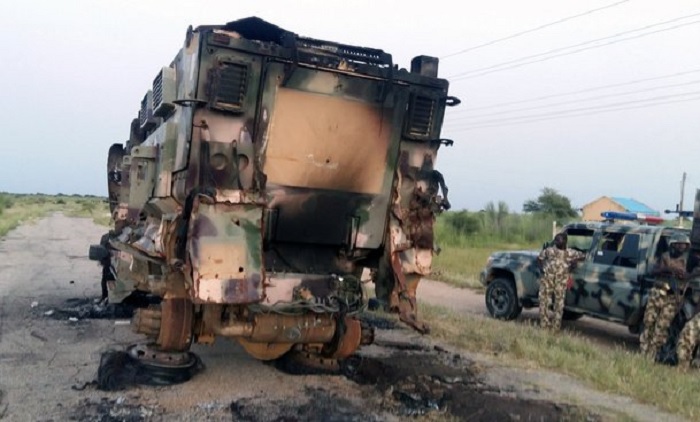
On September 2, Boko Haram (ISWA) militants reportedly killed 10 Nigerian soldiers in Borno state. Such bloodshed has become so commonplace that it often fails to garner much interest. International news outlets spilled little ink to report the incident. Nevertheless, the failures of the region’s militaries—as well as the Lake Chad Basin Commission’s Multi-National Joint Task Force (MNJTF)—to combat Boko Haram merit greater attention from policymakers and the international community.
The widespread and persistent human rights abuses Boko Haram routinely metes out against civilians is covered as routine. Indeed, readers of this blog will be familiar with CFR’s ambitious multiyear Nigeria Security Tracker project. Most of the nearly 10,000 entries since 2011 refer to incidents of Boko Haram attacks. The International Crisis Group has issued numerous in-depth reports of Boko Haram’s activities in Nigeria as well as in neighboring Cameroon, Chad, and Niger. Reporting on Boko Haram’s arsenal and modes of acquisition exists, but is comparatively thin and largely anecdotal.
Boko Haram’s strikes on the MNJTF and co-deployed national armed forces have been numerous and successful. Boko Haram has no shortage of targets. The MNJTF comprises thousands of troops from four LCBC member states: Cameroon, Chad, Niger, and Nigeria (Benin, not a LCBC member, also contributes). Soldiers from these countries—in much larger numbers—supplement this peacekeeping force and are co-deployed in the same sectors. An ongoing, partial review of open-source reporting on more than 100 attacks on armed forces personnel since 2015 reveals that Boko Haram has overrun fixed sites of companies and battalions in all four countries.
The true scale and scope of materiel Boko Haram has seized is very difficult to ascertain. Boko Haram has reason to inflate its military successes, and governments from the region have little incentive to publicize their losses. Reporting is imprecise. It is difficult to know strengths that correspond to “patrols,” “convoys,” “companies,” and “battalions.” There are persistent reports that soldiers lack proper levels of ammunition with which to defend themselves. Crew-served materiel as well as armored vehicles at fixed sites are often in disrepair and number below what military doctrine requires.
What is not in doubt is that these attacks have netted Boko Haram millions of rounds of ammunition, thousands of assault rifles and assorted firearms, and hundreds of military vehicles, including armored tanks and self-propelled artillery. The seizure of non-lethal materiel, such as petrol, communications gear, and uniforms, also occurs on a sizeable scale and has important ramifications. Insurgent groups’ attacks on peacekeepers and co-deployed military units and confiscation of lethal materiel is a long-standing and widespread phenomenon. But the success that Boko Haram has enjoyed is deeply worrisome.
Better understanding the full extent of the problem is an important first step. A study that moves past anecdotal accounts will enhance the prospects for accountability and facilitate security sector reform, which is of fundamental importance due to credible reports of poor morale and leadership. Enhanced stockpile management and record-keeping is also needed. Fortunately, existing arms control measures—many of them legally binding—already exist. But international and regional actors too often pay them lip service despite largely footing the bills. Arms export policies need to be reassessed given how much materiel is being lost to unintended recipients. This list is indicative and not exhaustive.
States and organizations that contribute troops, military equipment, money, and political support for ongoing efforts to counter Boko Haram need to reassess their current approaches to combatting the threat. The United States has an important role to play as a strategic partner to states in the region and a generous funder of small arms management and destruction initiatives. Current efforts arguably empower and embolden the very target they seek to neutralize.
